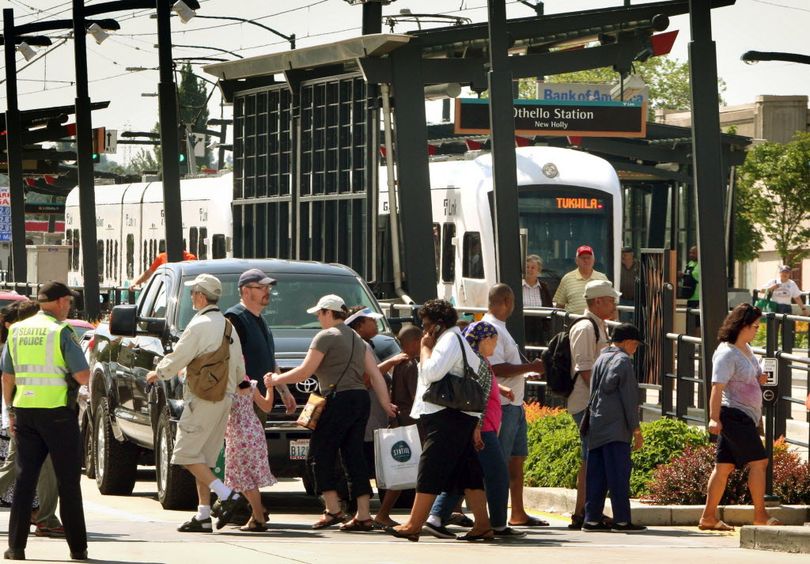Seattle Transit joins Spokane with green bonds

Last week, the Seattle Transit Authority issued $923 million in green bonds in what's being called the largest green-bond issuance by a municipal entity.
The bonds will be used to expand the region's light rail system, driving down carbon emissions from transportation in the process. Unlike most municipal bonds - which is basically the fancy way cities call taking out a loan - green bonds are intended for environmentally-friendly projects.
The news out of Seattle was crowed as "a milestone in the growth of a financial instrument that’s only been around for less than a decade."
But Seattle is not the first to issue a green bond, not in the nation, and not in the state.
Earlier this year, Spokane issued $200 million in green bonds for the massive public works project the city is working on – a top-to-bottom retrofitting of its wastewater and stormwater systems. The green bond issuance was the biggest in the city's history, for the largest public works project in the city's history, and it fit the new type of funding aimed at environmentally beneficial projects. Aside keeping pollution out of the river, some of the projects will re-do streets and add bicycle and pedestrian infrastructure.
At the time, the city's chief financial officer, Gavin Cooley, said the type of bonds would draw a new type of investor.
“To the extent that any investor has a sensitivity to where the proceeds of their investments are going to be used, then they’re going to view these bonds in a more positive way and they might be willing to pay a little bit more,” Cooley said. “Some investors may be willing to accept a lower rate of return if they see the investment as meeting their objectives, if it’s being spent in the right way.”
It's no wonder cities are drawn to the new bond. In 2012, $3 billion in green bonds were sold worldwide. Last year, that number more than tripled to $10 billion. In 2014, the amount of green bonds is expected to account for $50 billion, an impressive amount of growth for a new market, but still little compared to the entire bond market, which totals $80 trillion.
According to the Wall Street Journal, Brian McCartan, chief financial officer for Sound Transit, said "the agency is hoping to diversify its investor base with the new green bonds, as well as promote its sustainability program and deepen the green-bond market."
To make its case, the transit agency commissioned a study from research-and-analysis firm Sustainalytics to confirm the environmental benefits of the green bonds. Green-bond investors, the Journal reported, like these studies as "useful in determining whether a project is truly environmentally friendly."
